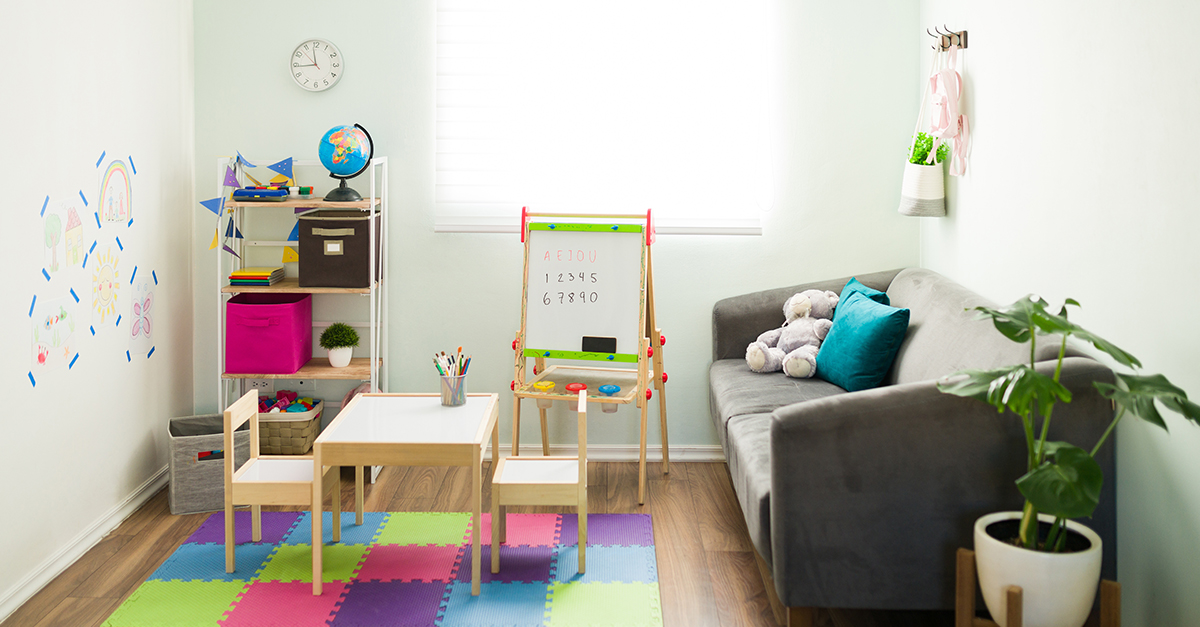Tips on Schoolroom Organization

“How should I organize our schoolroom?” is a question asked by first-time homeschoolers and veterans alike, and changes from year to year. One of the first things my parents purchased when they started homeschooling was a set of school desks & chairs from a local yard sale.
There are several ways to organize your (home)schoolroom. I collected tips from our social media followers, email newsletter, and the I asked the COAH Community.
Schoolroom Organization Tips
I really like the “workbox” organization concept. Meaning that we use a set of drawers to keep our daily work in. Each drawer contains 2 subjects, and I can easily pull out the items needed for that day. Then when my kiddos get into the school room, they just need to go through their drawers and can easily see what they need to complete each day. – erica
I have a set of square plastic containers with hinged, snap lids. Each weekend, I fill each day’s box with work for both of my kids. At this point they are too young to manage it by themselves, but I anticipate continuing with the method as they age. – LinseyWilliams
Don’t be afraid to use your dining room table, or wherever the center of family life is for lessons. Having a tucked away learning center will stay as just that…tucked away. For us, it helped to accomplish our daily lessons. – Julie J.
My children are 13, 10 and 7 and they all have their own [12×12] cubes. They have 1 for their books, 1 for my teacher books, and 1 for their backpacks (we belong to a co-op). It make it easy for them to find their work (and put it back where it belongs). – Terri W.
I find that it helps to have a way to store things like pencils/erasers/crayons/colored pencils/pencil sharpeners and other necessary items within easy reach of my students. I now have five kids and each has a pencil box with basic supplies. The pencil boxes are each a different color. Each student is assigned a color (mechanical pencils match the box, as do rulers and compasses…notebooks and backpacks). I always know who left out the supplies. Each child has a drawer with the name of the child on the front where they put their pencil boxes and extra supplies that do not fit. They each have a large bin for notebooks and non-shared school books, too. The bins are labeled with the child’s name and are placed on shelves that even the youngest child can reach.
Math-U-See has its own shelf too! The blocks are stored within reach and the extra workbooks are stacked and ready for the students who finish a book. – Cheryl C.
Lots of bookcases! Also plenty of binders and dividers for printable downloads! – Kim G.
A plastic bin with a handle on top for each child to keep their own curriculum they are currently working with daily… also handy for travel! It teaches responsibility for own materials, too. – Yvonne C.
It is important to keep daily used stationery close at hand and properly organized. Having to look for any of those can waste a tremendous amount of time.
A kid-sized plastic table and chairs.
I keep puzzles and boardgames in one cupboard and have another cupboard for stationery and textbooks, organized according to subject and grade. – Elsabé Pienaar
Individual planners. I have found that each of my kiddos use that as the daily guide. – Jennifer E.
My advice is that you don’t need a “school room”. We schooled at our kitchen table with a bookshelf nearby, and a small rolling cart to contain all the “stuff”. Ours had three shelves, with books/binders on the bottom, pencils and utensils on the top, and thinner notebooks in the middle. It was easy to pull out whatever we needed and to clean it up at the end of “table time”. Our Math-U-See blocks are in a basket on the nearby bookshelf with the work books on the rolling cart. – Fontaine P.
Homeschooling 101 eBook
No one knows your child better than you. We trust parents, and we want you to have the confidence to make the right decision for your situation.
We have compiled this eBook to help you through your decision. You’ll learn:
- The History of homeschooling
- How to find your state’s homeschool laws
- The different styles of homeschooling
- Tips from both professionals and veterans
- Where to find practical and inspirational resources to improve your homeschool experience
Enter your information below, and we will email the eBook to you right away.
[hubspot portal=”20645761″ id=”55f761b0-b799-40eb-8bc4-415cd73b2257″ type=”form”]